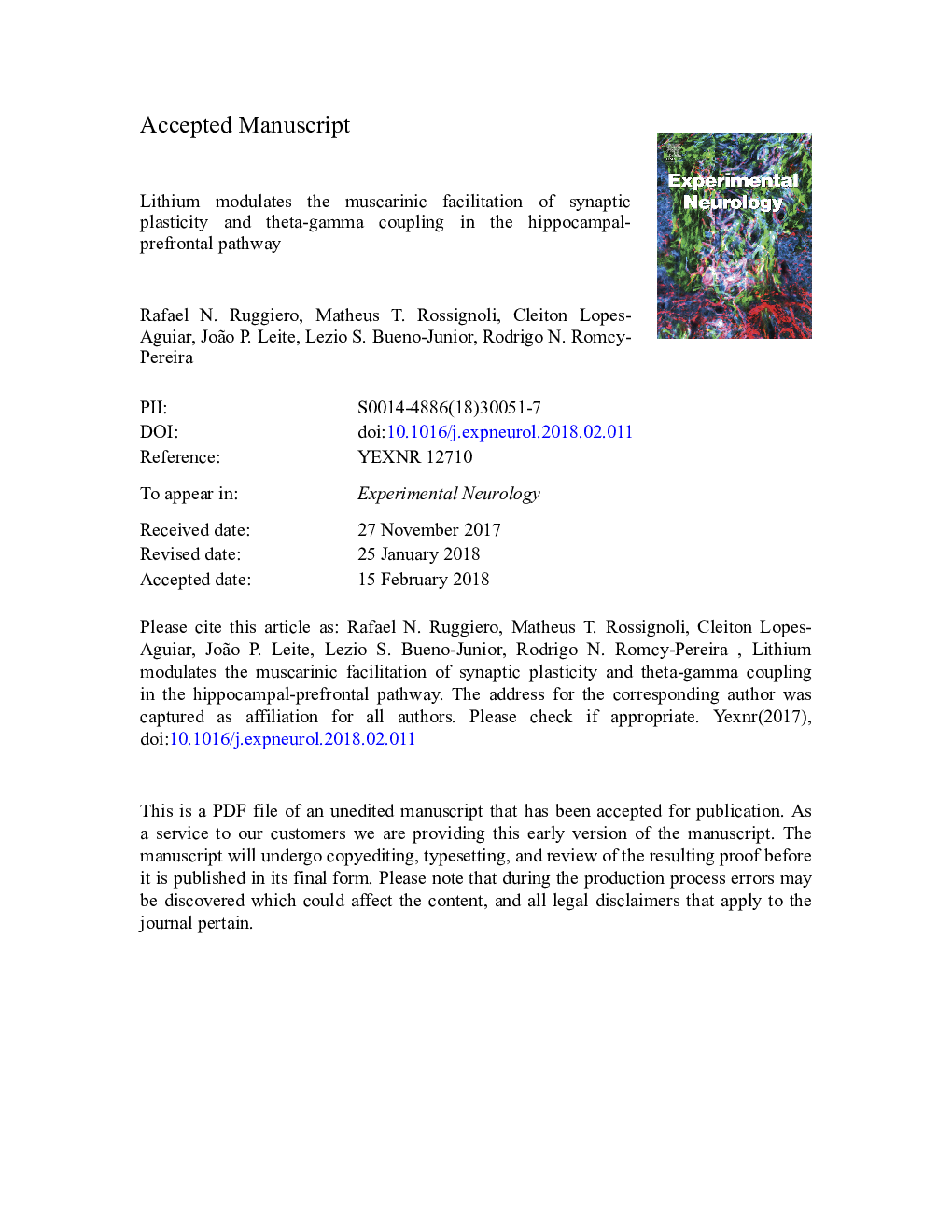| Article ID | Journal | Published Year | Pages | File Type |
|---|---|---|---|---|
| 8684640 | Experimental Neurology | 2018 | 43 Pages |
Abstract
Mood disorders are associated to functional unbalance in mesolimbic and frontal cortical circuits. As a commonly used mood stabilizer, lithium acts through multiple biochemical pathways, including those activated by muscarinic cholinergic receptors crucial for hippocampal-prefrontal communication. Therefore, here we investigated the effects of lithium on prefrontal cortex responses under cholinergic drive. Lithium-treated rats were anesthetized with urethane and implanted with a ventricular cannula for muscarinic activation, a recording electrode in the medial prefrontal cortex (mPFC), and a stimulating electrode in the intermediate hippocampal CA1. Either of two forms of synaptic plasticity, long-term potentiation (LTP) or depression (LTD), were induced during pilocarpine effects, which were monitored in real time through local field potentials. We found that lithium attenuates the muscarinic potentiation of cortical LTP (<20â¯min) but enhances the muscarinic potentiation of LTD maintenance (>80â¯min). Moreover, lithium treatment promoted significant cross-frequency coupling between CA1 theta (3-5â¯Hz) and mPFC low-gamma (30-55â¯Hz) oscillations. Interestingly, lithium by itself did not affect any of these measures. Thus, lithium pretreatment and muscarinic activation synergistically modulate the hippocampal-prefrontal connectivity. Because these alterations varied with time, oscillatory parameters, and type of synaptic plasticity, our study suggests that lithium influences prefrontal-related circuits through intricate dynamics, informing future experiments on mood disorders.
Keywords
Related Topics
Life Sciences
Neuroscience
Neurology
Authors
Rafael N. Ruggiero, Matheus T. Rossignoli, Cleiton Lopes-Aguiar, João P. Leite, Lezio S. Bueno-Junior, Rodrigo N. Romcy-Pereira,
